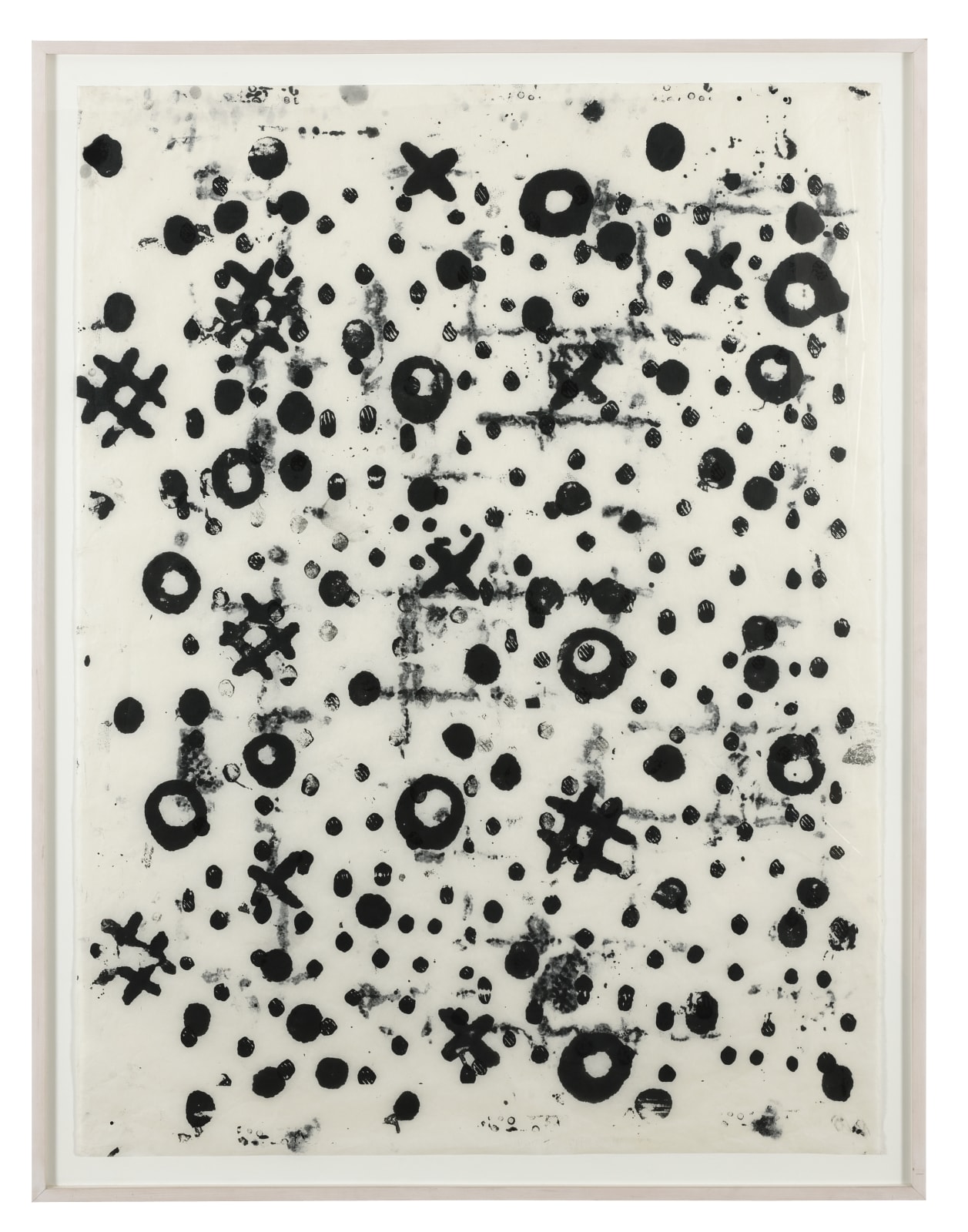
Christopher Wool
D59 , 1997
enamel on rice paper
168 x 122 cm
66 2/16 x 48 1/16 in
framed: 180.5 x 133.5 x 4 cm
66 2/16 x 48 1/16 in
framed: 180.5 x 133.5 x 4 cm
Christopher Wool is one of the most sought after contemporary artists, known best for his monochromatic works inspired by underground, urban life and the music scene of New York. His...
Christopher Wool is one of the most sought after contemporary artists, known best for his monochromatic works inspired by underground, urban life and the music scene of New York. His style is largely an ongoing intervention of the traditional mode of art making – a repetitive process where the limits of painting are continually pushed. In addition to painting, Wool has worked on paper consistently throughout his career, making both studies for paintings and discrete works specifically conceived for the medium. He has used both painted surfaces and unpainted rice paper for works using rollers, stamps, stencils, silk screens and sprays. These works enrich his oeuvre especially through the incorporation of the materiality of the surface of the paper and the degree of the absorption of the paint.
The intensity of the contrast between black and white, the complexity of the composition and the texture of the enamel on the paper reveal the use of rubber rollers, and the diversity of the paint surface, its blurred edges, its lacunae and its blots, demonstrate the delightful unpredictability of this manual process. Like Andy Warhol and even the Abstract Expressionists before him, Wool has always removed himself from the physical process of painting and making; leaving no evidence of his presence through brushstrokes or painterly flourishes. What at first seemed to be an image, a representation of the real world that could be searched for meaning, symbolism or narrative, can now be read as pure abstraction. Our perceptions, and our expectations, change.
The artist has exhibited internationally at acclaimed institutions including the Guggenheim Museum, New York, the Art Institute of Chicago, the Museum of Contemporary Art, Los Angeles, the Carnegie Museum of Art, Pittsburgh, Kunsthalle Basel, and the Musée d’Art Moderne de la Ville de Paris, among many others. He has also participated in the Whitney Biennial, 1989, Documenta, 1992, the Lyon Biennial, 2003, and the Venice Biennale, 2011.
The intensity of the contrast between black and white, the complexity of the composition and the texture of the enamel on the paper reveal the use of rubber rollers, and the diversity of the paint surface, its blurred edges, its lacunae and its blots, demonstrate the delightful unpredictability of this manual process. Like Andy Warhol and even the Abstract Expressionists before him, Wool has always removed himself from the physical process of painting and making; leaving no evidence of his presence through brushstrokes or painterly flourishes. What at first seemed to be an image, a representation of the real world that could be searched for meaning, symbolism or narrative, can now be read as pure abstraction. Our perceptions, and our expectations, change.
The artist has exhibited internationally at acclaimed institutions including the Guggenheim Museum, New York, the Art Institute of Chicago, the Museum of Contemporary Art, Los Angeles, the Carnegie Museum of Art, Pittsburgh, Kunsthalle Basel, and the Musée d’Art Moderne de la Ville de Paris, among many others. He has also participated in the Whitney Biennial, 1989, Documenta, 1992, the Lyon Biennial, 2003, and the Venice Biennale, 2011.
Provenance
Luhring Augustine, New YorkDewey & LeBoeuf LLP, New York
MARUANI MERCIER, Belgium
Private Collection, Belgium
Join our mailing list
* denotes required fields
In order to respond to your enquiry, we will process the personal data you have supplied to communicate with you in accordance with our Privacy Policy. You can unsubscribe or change your preferences at any time by clicking the link in our emails. This site is protected by reCAPTCHA and the Google: Privacy Policy and Terms of Service apply.